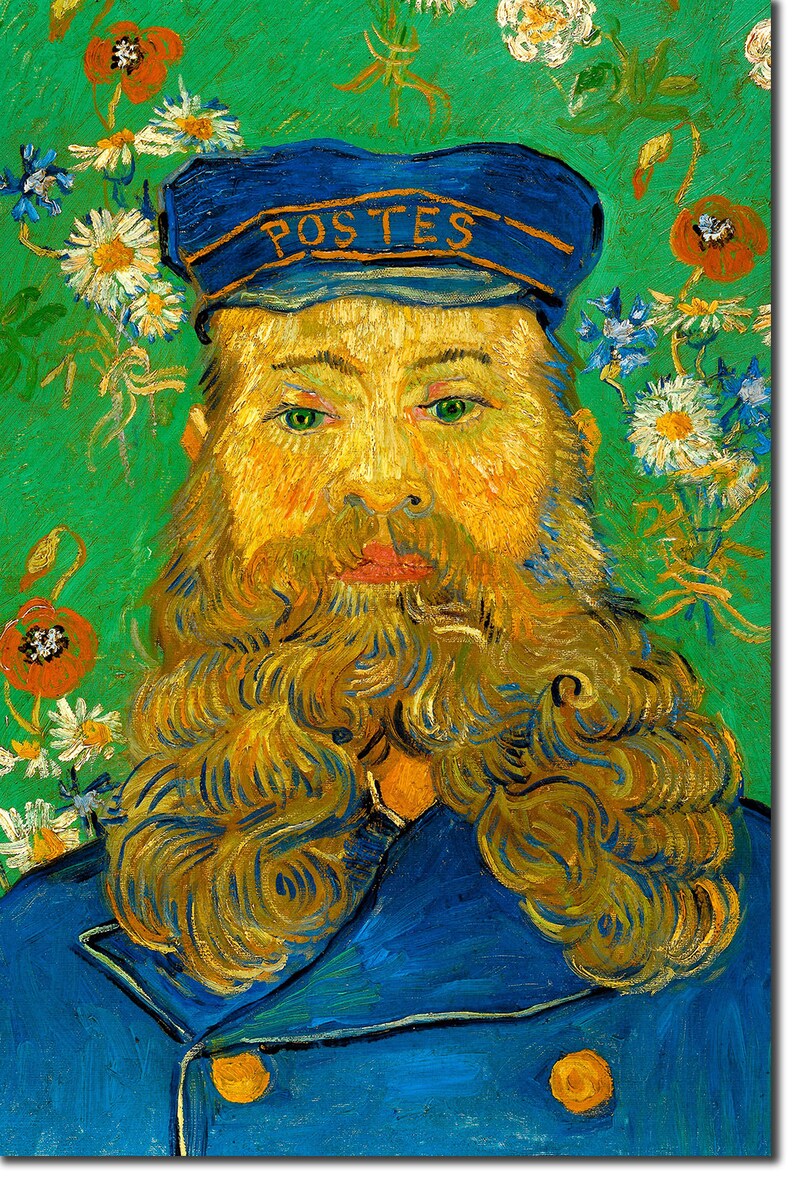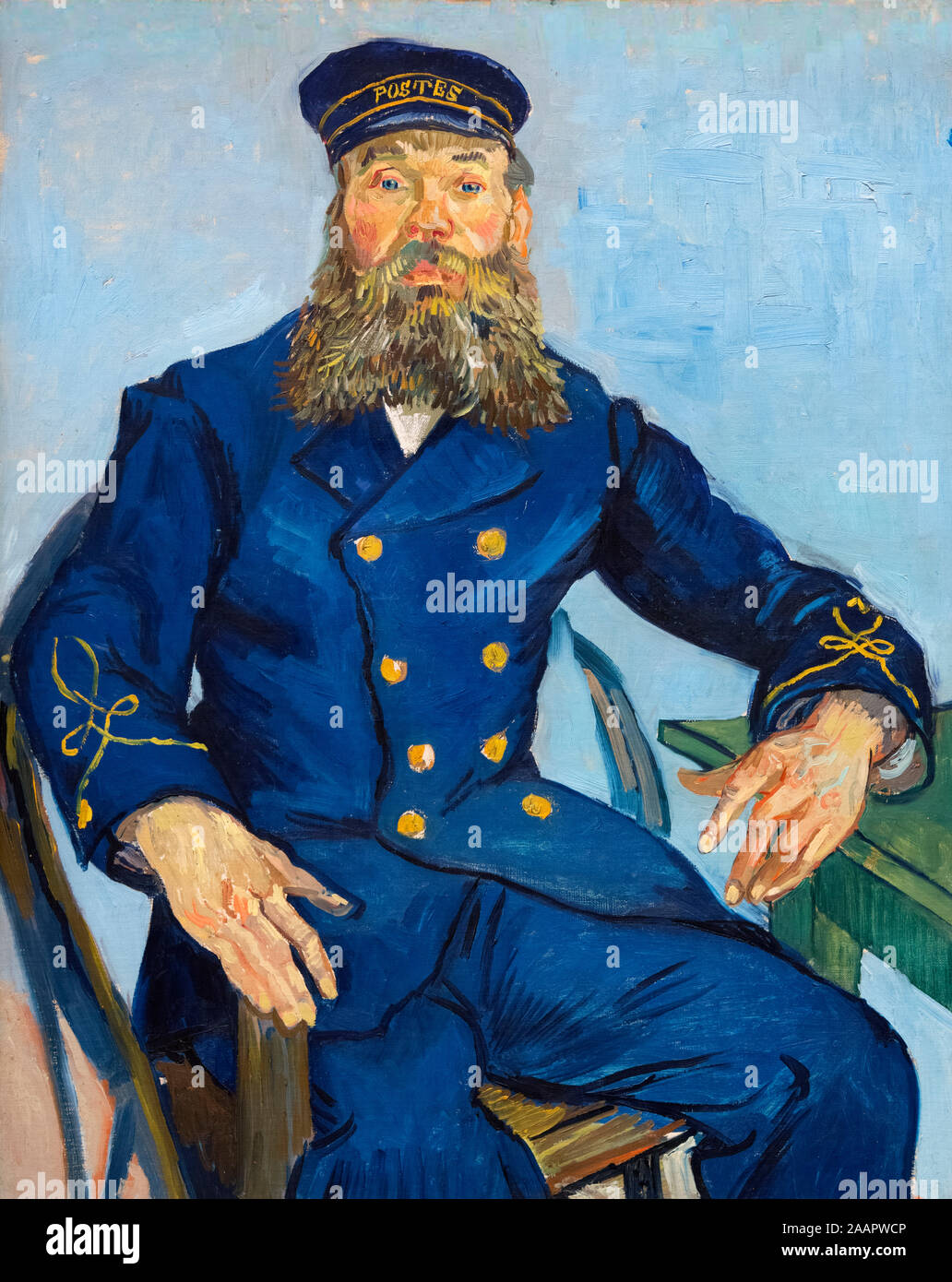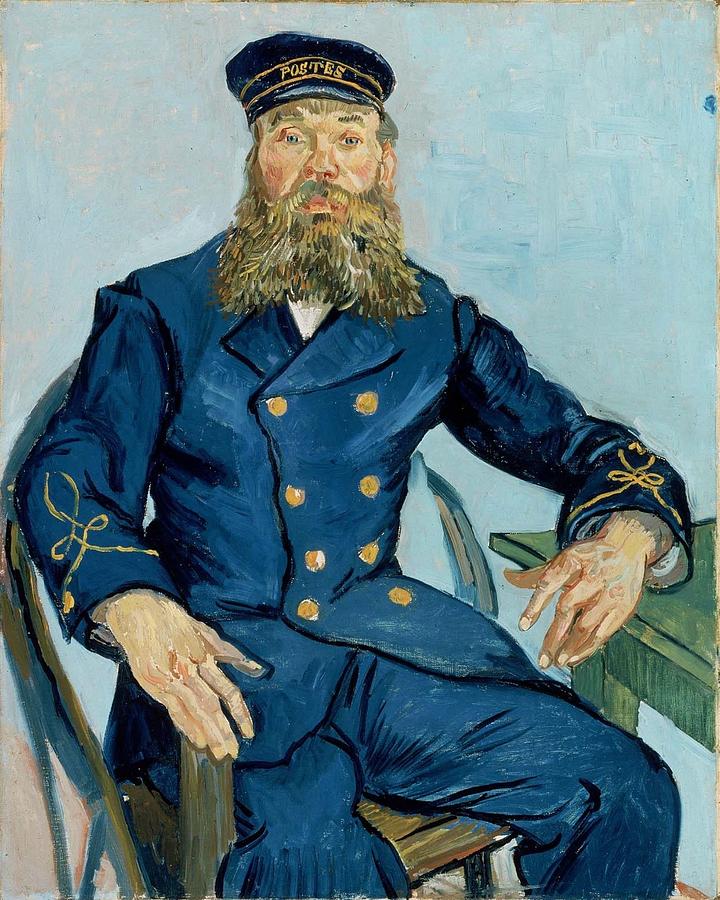

“Stature and celebrity don’t always go together,” he adds. “This tightly focused exhibit gives us a wedge into van Gogh’s entire world of madness, extremes and escape from convention. “It was William Blake who told us a poetic vision could see the world in a wildflower,” says Varnedoe, the curator. In 1890, van Gogh shot himself in the wheat fields he painted. “I tell you I have no right to complain of anything whatsoever in Arles when I think of some of the things I have seen there which I shall never be able to forget.”īut even that good soul wasn’t enough to save him.
#Van gogh mailman full#
such a good soul and so wise and so full of feeling and so trustful,” van Gogh wrote Theo. Roulin moved to Marseilles to take a better-paying job to support his family, but continued to write and visit van Gogh. Soon after that final portrait was painted, in 1889, the friends were separated. There’s a light in Roulin’s eyes that seems to radiate warmth, love and hope. In the final two portraits, the somber backgrounds have been replaced by a mass of flowers – a symbol of the intense good feelings van Gogh had for his subject. In a later portrait showing only his head and shoulders, the blue of Roulin’s uniform mingles with the auburn of his beard, and swirls of color soften the hard lines of his face. After the first, stiff-looking likeness – in which Roulin looks much older than his 47 years – van Gogh stopped painting the postman’s body and focused on capturing his soul. The portraits here, arranged in chronological order, show how. “How can I paint an ugly man who’s beautiful inside?” “How can I paint Roulin as I feel him?” he wrote Theo. In turn, van Gogh felt a deep affection for this peasant-like person with alcohol-flushed cheeks and arthritic-looking, paddle-like hands. When van Gogh cut off part of his ear that winter after an argument with fellow painter Paul Gauguin, it was Roulin who tended to him that night, took him to the hospital the next day, and oversaw his recovery.

Their shared populist politics, innate decency and Roulin’s love of his family – which a loner like van Gogh could only dream of – made them fast friends. Roulin was sorting mail at the Arles train station when van Gogh came to town in the spring of 1888. Next to van Gogh’s brother Theo, his relationship with Roulin was the single most important bond the artist ever formed, even though they were acquainted for barely a year, says MoMA curator Kirk Varnedoe.

So drawn was van Gogh to the kindly, hard-drinking postman that the artist painted six portraits of Roulin, five of which (along with a reproduction of the sixth) are on display through May 15 at the Museum of Modern Art. Paintings (The Hague-Drenthe) Īll works listed here are oil on canvas unless otherwise indicated.ĭenotes paintings auctioned for a record-breaking price.ONE postman really delivered for Vincent van Gogh.His name was Joseph Roulin, and during the great artist’s darkest days, he offered comfort, hope – and a terrific subject to paint. While more accurate dating of Van Gogh's work is often difficult, as a general rule, the numbering from Jan Hulsker's catalogue is more precise chronologically. The listing is ordered by year and then by catalogue number. The Kröller-Müller Museum in Otterlo (also in the Netherlands), has another considerable collection of his paintings. The Van Gogh Museum in Amsterdam is dedicated to Van Gogh's work and that of his contemporaries.

Gachet was sold for US$82.5 million at Christie's, establishing a new price record until exceeded in 2004 by a Picasso painting. On March 30, 1987, Irises was sold for a record US$53.9 million at Sotheby's on May 15, 1990, his Portrait of Dr. Today many of his pieces-including his numerous self portraits, landscapes, portraits and sunflowers-are among the world's most recognizable and expensive works of art. In 2013, Sunset at Montmajour became the first full-sized Van Gogh painting to be newly confirmed since 1928. He produced more than 2,000 artworks, consisting of around 900 paintings and 1,100 drawings and sketches. Van Gogh did not begin painting until his late twenties, and most of his best-known works were produced during his final two years. Today, he is widely regarded as one of history's greatest painters and an important contributor to the foundations of modern art. According to the legend, Van Gogh sold only one painting, The Red Vineyard, bought for 400 francs by the painter and art collector Anna Boch. Little appreciated during his lifetime, his fame grew in the years after his death. List of works by Vincent van Gogh is an incomplete list of paintings and other works by the Dutch artist Vincent van Gogh (1853–1890).


 0 kommentar(er)
0 kommentar(er)
